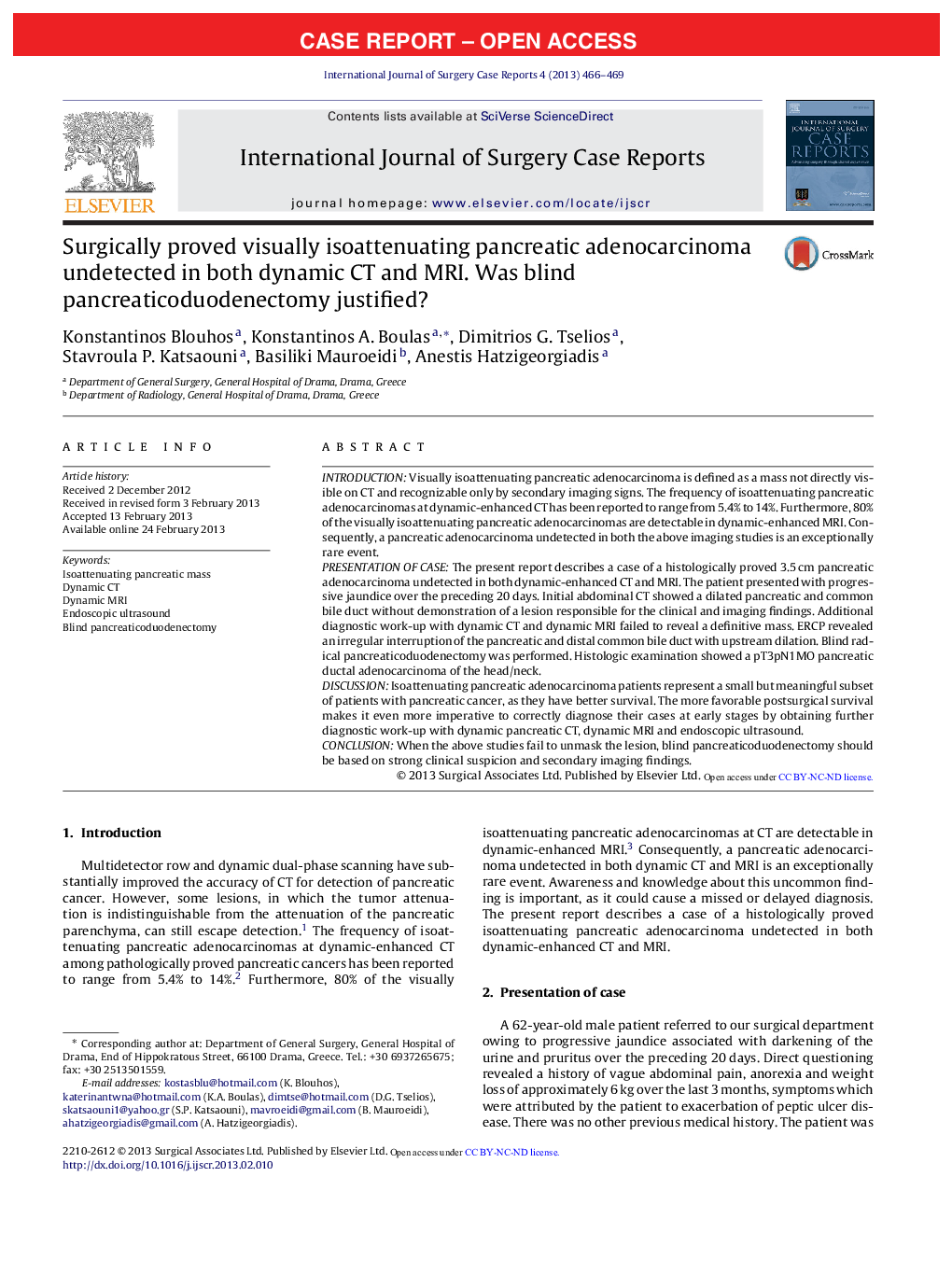| Article ID | Journal | Published Year | Pages | File Type |
|---|---|---|---|---|
| 4289951 | International Journal of Surgery Case Reports | 2013 | 4 Pages |
INTRODUCTIONVisually isoattenuating pancreatic adenocarcinoma is defined as a mass not directly visible on CT and recognizable only by secondary imaging signs. The frequency of isoattenuating pancreatic adenocarcinomas at dynamic-enhanced CT has been reported to range from 5.4% to 14%. Furthermore, 80% of the visually isoattenuating pancreatic adenocarcinomas are detectable in dynamic-enhanced MRI. Consequently, a pancreatic adenocarcinoma undetected in both the above imaging studies is an exceptionally rare event.PRESENTATION OF CASEThe present report describes a case of a histologically proved 3.5 cm pancreatic adenocarcinoma undetected in both dynamic-enhanced CT and MRI. The patient presented with progressive jaundice over the preceding 20 days. Initial abdominal CT showed a dilated pancreatic and common bile duct without demonstration of a lesion responsible for the clinical and imaging findings. Additional diagnostic work-up with dynamic CT and dynamic MRI failed to reveal a definitive mass. ERCP revealed an irregular interruption of the pancreatic and distal common bile duct with upstream dilation. Blind radical pancreaticoduodenectomy was performed. Histologic examination showed a pT3pN1MO pancreatic ductal adenocarcinoma of the head/neck.DISCUSSIONIsoattenuating pancreatic adenocarcinoma patients represent a small but meaningful subset of patients with pancreatic cancer, as they have better survival. The more favorable postsurgical survival makes it even more imperative to correctly diagnose their cases at early stages by obtaining further diagnostic work-up with dynamic pancreatic CT, dynamic MRI and endoscopic ultrasound.CONCLUSIONWhen the above studies fail to unmask the lesion, blind pancreaticoduodenectomy should be based on strong clinical suspicion and secondary imaging findings.
